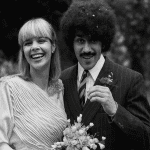In the world of modern marketing, few topics generate as much discussion as customer loyalty. Every brand seeks to convert casual buyers into repeat advocates, yet only a handful of leaders have managed to consistently achieve that across multiple industries. Among those is Gavin Hawthorn, a UK-based marketing strategist whose name has become synonymous with loyalty, data-led decision-making, and sustainable business growth.
Over the last two decades, Hawthorn’s career has spanned sectors as diverse as retail, hospitality, healthcare, and wellness. His philosophy is simple yet profound: put the customer experience first, measure everything that matters, and let loyalty drive growth. This article explores his journey, his business ventures, and the lessons marketers can draw from his approach.
Early Career and Professional Foundation
Like many successful marketers, Gavin Hawthorn’s early career combined analytical thinking with customer empathy. He started in brand and marketing roles that emphasized understanding customer motivations, mapping their journeys, and aligning brand communications with measurable outcomes.
What set him apart from the beginning was a deep curiosity about what keeps customers coming back. Rather than focusing solely on flashy campaigns or acquisition metrics, Hawthorn focused on the subtler, long-term elements of retention—trust, relevance, and perceived value. This early grounding shaped the rest of his career and ultimately positioned him as one of the UK’s foremost voices in loyalty strategy.
Rise Through Retail and CRM Leadership
The turning point in Hawthorn’s career came when he began working in customer relationship management (CRM) and loyalty program design for leading UK retail brands. His work proved that data, when used responsibly and intelligently, could transform not just marketing efficiency but also the entire customer experience.
He became known for designing CRM ecosystems that went beyond transactional communication. Instead of treating customers as data points, his teams created multi-touchpoint experiences—emails, app journeys, membership programs—that made people feel recognized and rewarded.
In the retail environment, this approach helped to create a sense of belonging. Customers weren’t simply buying a product; they were part of a community. Hawthorn’s belief that “retention is the most efficient form of acquisition” guided how he built and scaled loyalty systems that produced real, measurable returns.
Transition to Multi-Sector Leadership
After achieving success in retail marketing, Hawthorn’s expertise became highly sought after by organizations operating in franchised and service-driven industries, such as hospitality and healthcare. His leadership roles in these areas marked a transition from marketing manager to full-scale strategic leader—someone capable of influencing culture, customer journeys, and commercial strategy at the board level.
In these positions, he continued to apply his core principles:
-
Customer-first design
-
Data-informed personalization
-
Alignment between marketing promises and operational delivery
By bridging the gap between marketing and operations, he helped brands achieve a consistency that customers could feel. It’s an approach that not only enhances loyalty but also protects reputation—because in service industries, experience is the ultimate marketing channel.
Loyalty Philosophy: Building Relationships, Not Databases
Central to Gavin Hawthorn’s professional identity is a philosophy of loyalty that prioritizes human relationships over automation. In his view, technology is an enabler—not the end goal. The objective is not to create the most complex CRM stack, but to use data ethically and intelligently to create more relevant and emotionally resonant interactions.
He often describes loyalty as a form of “earned trust.” Discounts and points can drive short-term behavior, but they don’t necessarily create commitment. True loyalty comes when a brand consistently delivers value, communicates transparently, and recognizes the customer’s individual needs.
This perspective has allowed him to create loyalty systems that balance both emotional and rational triggers. The result: brands that don’t just retain customers—they cultivate advocates.
From Corporate Leadership to Entrepreneurship
After a long tenure in corporate environments, Hawthorn took an entrepreneurial turn, investing in and launching a franchise within the health and wellness sector. The move may have surprised some, but for those familiar with his career trajectory, it made perfect sense.
The franchise model—built on recurring membership revenue and standardized customer experience—was a natural fit for his skill set. By leveraging his deep knowledge of retention economics, Hawthorn turned the operation into a living case study of how loyalty-driven thinking can power local business success.
He focused on four key pillars:
-
Consistency: Ensuring every customer receives the same quality experience on every visit.
-
Membership design: Creating packages that reward regular use rather than sporadic engagement.
-
Community connection: Positioning the business as a trusted local wellness provider.
-
Operational measurement: Tracking satisfaction, frequency, and referrals with the same rigor as any large brand.
This entrepreneurial venture demonstrated that loyalty isn’t exclusive to big brands. Even local businesses can apply the same principles—clarity, empathy, and measurement—to drive sustainable growth.
Lessons in Leadership
1. Retention as a Business Strategy
Many companies talk about retention, but few treat it as a core strategic pillar. Hawthorn’s approach reframes retention as a source of competitive advantage. When customer relationships are nurtured effectively, they generate repeat revenue, predictable cash flow, and word-of-mouth advocacy—all without the escalating costs of constant acquisition.
For modern brands, this means structuring marketing not as a funnel that ends at the point of purchase, but as a loop of ongoing engagement. Every purchase should trigger the next conversation, not mark the end of it.
2. The Power of Measured Simplicity
One of Hawthorn’s defining leadership traits is simplicity in execution. His teams are known for focusing on clear metrics—customer lifetime value (CLV), retention rate, and satisfaction—rather than vanity KPIs. This clarity enables faster decisions and a shared understanding of success.
3. Culture Before Campaigns
Hawthorn argues that no loyalty program will succeed unless the internal culture supports it. Employees must understand and believe in the brand promise. Whether in a retail store or a wellness clinic, every staff interaction becomes a marketing moment. His leadership style therefore blends customer-centric philosophy with coaching and empowerment of frontline teams.
The Evolution of Loyalty Marketing
Under Hawthorn’s guidance and philosophy, loyalty has evolved from a points-based model to a value-based relationship. He’s been an advocate for what can be described as the “third generation” of loyalty programs:
-
Transactional loyalty (points and discounts) – The early phase focused on giving customers a reason to return.
-
Emotional loyalty (brand affinity) – The second phase integrated storytelling and experience.
-
Behavioral loyalty (predictive engagement) – The current phase leverages data responsibly to anticipate customer needs and create timely, helpful interactions.
This evolution aligns with broader consumer behavior trends: customers today expect personalization, relevance, and authenticity. For Hawthorn, the challenge is to use technology to enhance human connection—not replace it.
Adapting to the Data Privacy Era
Another defining aspect of Hawthorn’s thinking is respect for data privacy. In an era shaped by GDPR and increasing consumer scrutiny, he emphasizes transparency as a competitive differentiator. Customers are more likely to share data when they trust how it will be used.
In his programs and campaigns, privacy is positioned not as a regulatory burden but as a brand value. It’s about showing customers: “We know you, we value you, and we protect your information.” This builds confidence and reinforces long-term loyalty, especially in industries like healthcare and wellness where trust is paramount.
The Franchise Case Study: Membership as a Growth Engine
Within his wellness business, Hawthorn implemented a membership-based model—a structure that encourages recurring usage and long-term engagement. This approach mirrored the subscription principles used successfully in digital products, gyms, and hospitality memberships.
The results of such a model typically include:
-
Predictable revenue streams, which improve operational stability
-
Higher lifetime value, as customers engage more frequently
-
Stronger community building, since members feel a sense of belonging
-
Lower churn rates, driven by consistent, personalized follow-ups
By merging the art of customer experience with the science of data, Hawthorn effectively applied enterprise-level marketing frameworks to a local business—proving that loyalty is scalable at any level.
A People-First Marketing Ethos
At the heart of everything Gavin Hawthorn does lies a people-first ethos. This means putting customer well-being and satisfaction before short-term gains. His marketing mindset is rooted in empathy: understanding customer needs, removing friction, and delivering genuine value.
He often frames loyalty not as manipulation, but as mutual benefit—a relationship where the customer wins as much as the business does. In today’s climate of consumer skepticism and brand fatigue, this principle stands out as both authentic and commercially wise.
The Future of Loyalty Marketing
Looking ahead, Hawthorn envisions a marketing landscape where first-party data and community engagement will replace mass media dependency. As digital privacy regulations tighten and ad costs rise, brands must learn to build direct, trusted relationships with their audiences.
He advocates for three core shifts that every forward-thinking marketer should adopt:
-
Own your audience. Build channels (email, app, community) that you control rather than renting attention from social platforms.
-
Deliver continuous value. Give customers a reason to engage even when they’re not buying—through advice, education, or entertainment.
-
Integrate feedback loops. Use data not just to target, but to listen and improve the experience.
These principles, when applied consistently, create what Hawthorn calls a “living loyalty ecosystem”—a system where marketing, operations, and service continuously reinforce one another.
Lessons for Aspiring Marketers
Marketers and business owners can draw several actionable lessons from Gavin Hawthorn’s career and methods:
-
Measure the right metrics. Focus on retention rate, churn, satisfaction, and LTV—not just new leads.
-
Invest in experience. Marketing begins the moment a customer interacts with your brand, not just when they see an ad.
-
Build trust. Be transparent with data usage and reward customers fairly.
-
Create emotional resonance. Loyalty is more than points; it’s about how customers feel.
-
Keep learning. Industries evolve, but the fundamentals of human connection remain the same.
These lessons reflect the essence of modern marketing—balancing art and science, emotion and data, innovation and ethics.
The Broader Impact of His Work
Gavin Hawthorn’s influence extends beyond the brands he has led or the ventures he owns. His body of work represents a philosophical shift in how marketing is perceived: from one-time persuasion to long-term relationship building.
His leadership style has inspired many professionals to think beyond the traditional marketing funnel, embracing a lifecycle mindset where customers are continuously engaged, rewarded, and recognized.
Moreover, his cross-sector experience—from multinational hospitality companies to local wellness franchises—demonstrates that loyalty is a universal language. Regardless of industry, the formula remains constant: deliver consistent value, communicate authentically, and put people first.
A Marketer’s Legacy in the Making
Although still active in his entrepreneurial and advisory roles, Hawthorn’s career already illustrates what future marketing leadership will look like: customer-obsessed, data-informed, and ethically grounded.
His transition from corporate marketing to franchise ownership and strategic advisory work highlights a new breed of marketer—one who doesn’t just talk about growth, but builds it sustainably. The common thread across his ventures is the belief that loyalty, when earned and nurtured properly, is the most powerful growth engine a brand can have.
Conclusion
The story of Gavin Hawthorn is not just about one individual’s career path—it’s a case study in how marketing has evolved from product promotion to relationship management. His achievements across multiple industries underscore a timeless truth: while technologies, platforms, and tools will always change, the human need for connection, trust, and recognition never will.
For business owners and marketers alike, his example offers a clear roadmap:
-
Know your customer.
-
Respect their data.
-
Deliver value consistently.
-
Measure what matters.
-
Build a business that customers are proud to support.
As we move further into a data-conscious, experience-driven era, professionals like Gavin Hawthorn remind us that the best marketing doesn’t feel like marketing at all—it feels like genuine care.










